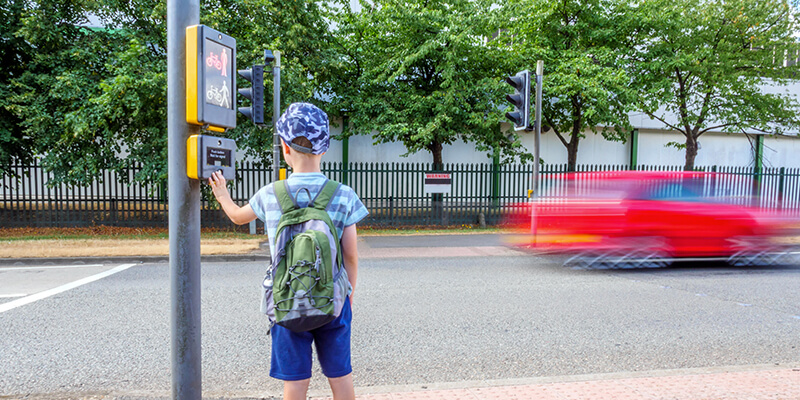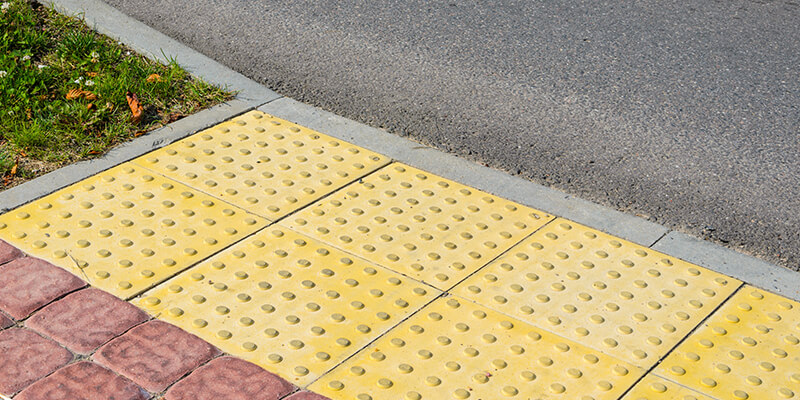Do you know what the different types of pedestrian crossings are in the UK? Do you know the difference between a puffin and a pelican crossing? In the UK, there are a variety of crossings to help people reach the other side of the road, with most incorporating easy-to-recognise lights and signals. But it’s not all about the pedestrian; drivers have to take responsibility to act appropriately at every crossing within clear crossing guidelines set out in The Highway Code. But do you know a toucan from a pelican? And what is a puffin crossing anyway?

Different pedestrian crossings
There are a variety of different pedestrian crossings with different meaning and rules. You need to be aware of the various types of pedestrian crossings when driving, so that you know how to react correctly when you come across them. The different types of pedestrian crossings are:
Accessible signals on pedestrian crossings
Blister pavements
When standing at crossings, you may have noticed bumps on the pavement under your feet. These blister surfaces at pedestrian crossings provide a warning to people with visual impairments to indicate that there is a crossing and to help them differentiate the difference between the pavement and the dropped kerb. They are installed in an L-shape with the corner of the ‘L’ used to indicate where the pushbutton controls are to activate the crossing.
Audio signals
In order to provide a signal to those with visual impairments, many crossings make a continuous beeping sound when it is safe to cross. For safety reasons, audible signals are not used on all crossings, such as roads where there are multiple crossings within close proximity, where crossings are split by an island, or where there is a pegasus crossing.
Rotating cones
Rotating cones were first introduced to pedestrian crossings in 1989 after Nottingham University took the idea to the Department for Transport. The cones are there to help people with visual impairments cross the road. The cone starts to rotate as the signal turns green, indicating that pedestrians have the right of way. Surprisingly, these are not fitted to every crossing by default, but local authorities are encouraged by the Department for Transport to use them on puffin, pelican and toucan crossings wherever possible.

Can you cross the road where there is no crossing?
While there are certain roads where pedestrians are not permitted, such as motorways, there is no UK law banning jaywalking and in general, people are free to cross where they choose. The Highway Code features guidelines specifically for pedestrians when they are crossing – this is known as The Green Cross Code and features five steps to help adults and children cross roads safely. There are often pedestrian refuge islands, which is a raised section of pavement between two lanes of traffic moving in opposite directions, and these usually exist where it’s common for pedestrians to cross, yet not enough pedestrian traffic to justify the expense of a pedestrian controlled crossing. The Islands normally have yellow and white plastic bollards with a blue arrow to
remind motorists to keep left. Kerbs are dropped at both sides of the road, usually with tactile paving where the pavement slopes towards the road. Refuge Islands allow pedestrians to stop in the centre of the road, so they can split the crossing into two stages for each direction of traffic.
Advantages
- Allows pedestrians to cross more easily than if there was no crossing.
- May help to cross the road more quickly, as a gap is only required in one direction of traffic.
- The cheapest crossing design, in comparison to other crossings (e.g. puffin, zebra crossings).
- Pedestrian refuges narrow the road, which may reduce the speed of vehicles.
Disadvantages
- There is no pedestrian priority. Motor vehicles have priority and pedestrians should wait until there is a safe gap in the traffic before they take refuge in the centre of the road.
- Pedestrians may have to wait much longer for a gap in vehicle traffic to cross safely, compared to a zebra or puffin crossing. This will happen with heavy traffic.
- For the pedestrian to cross safely, they must have good judgement of motor vehicle speeds and gaps in vehicle traffic.
- Visually impaired people, or those with other disabilities may find refuge island less easy to use compared with a zebra or puffin crossing.
- Some motor vehicle drivers act dangerously near crossing islands if a cyclist is passing through. They may squeeze past the cyclist when passing the crossing island or swerve dangerously around the cyclist just before the crossing island. Cyclists can feel very uncomfortable with this behaviour.
